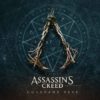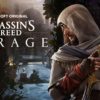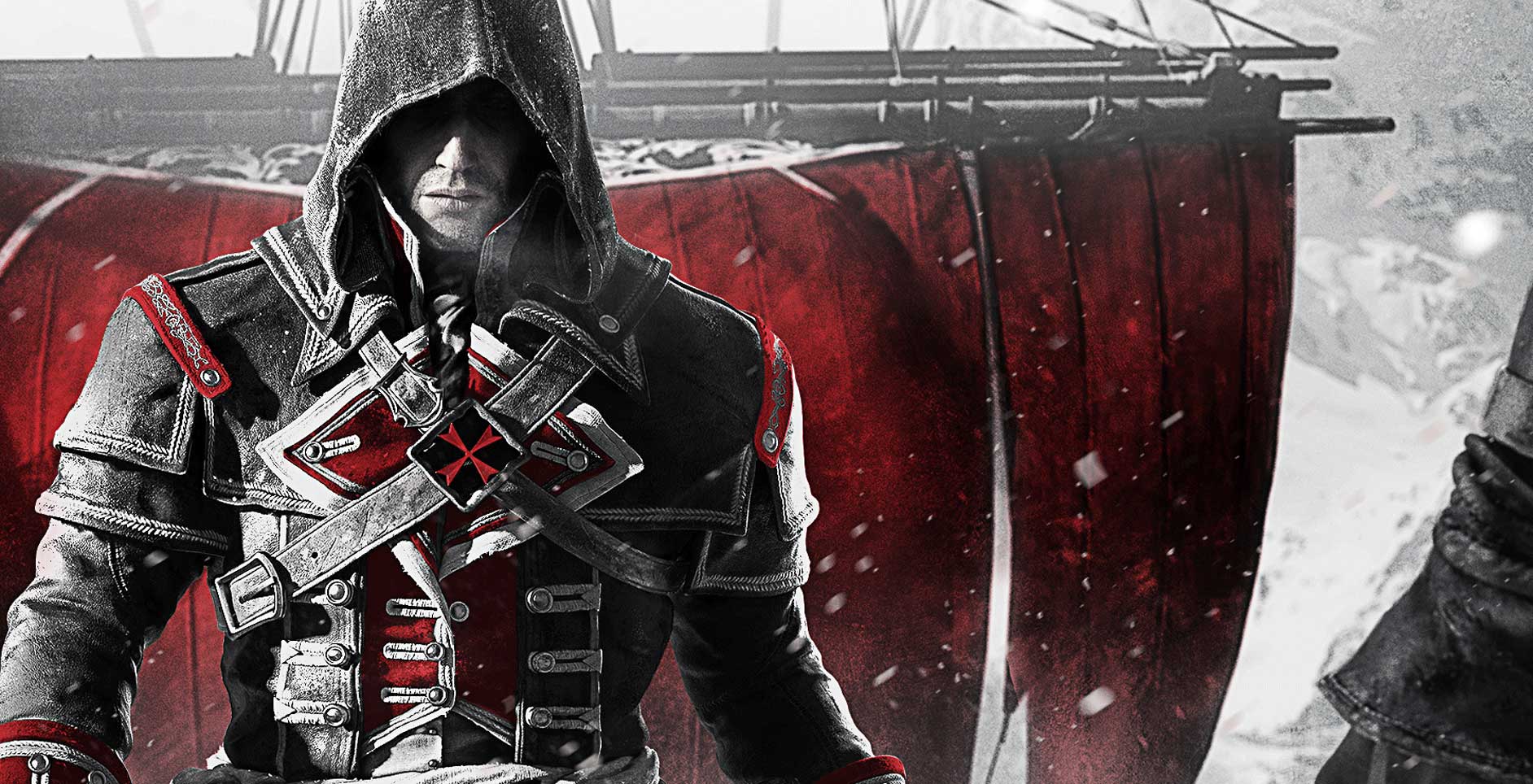Assassin’s Creed Rogue was a bit of a surprise for me. I expected it to be a bit of a half assed cash grab designed to get people to buy two Assassin’s Creed games in one year, but instead what it felt like was a competent follow-up to Black Flag. Sure, there’s some moments that are a little bit too close to Black Flag but the concept of Rogue, playing as the bad guys, is something too intriguing to pass up. I was surprised it took Ubisoft so long to bring the game to newer consoles. Assassin’s Creed Rogue Remastered is from a time before the bells and whistles of Origins came along, but still a game worth trying.
Unlike Unity and every other game before it, Rogue follows an assassin named Shay Cormac, and takes place between the years of 1752 and 1761 during the Seven Years’ War. This places it roughly a few years after Black Flag but also overlapping with Assassin’s Creed III – which seems appropriate as it aims to wrap up the events of those games and characters along with leading into the beginning of Unity, which it does rather well. Shay is an assassin who is slowly beginning to question whether what he’s doing is right, and eventually defects to the Templar cause. So, he’s gone rogue, essentially. Sorry.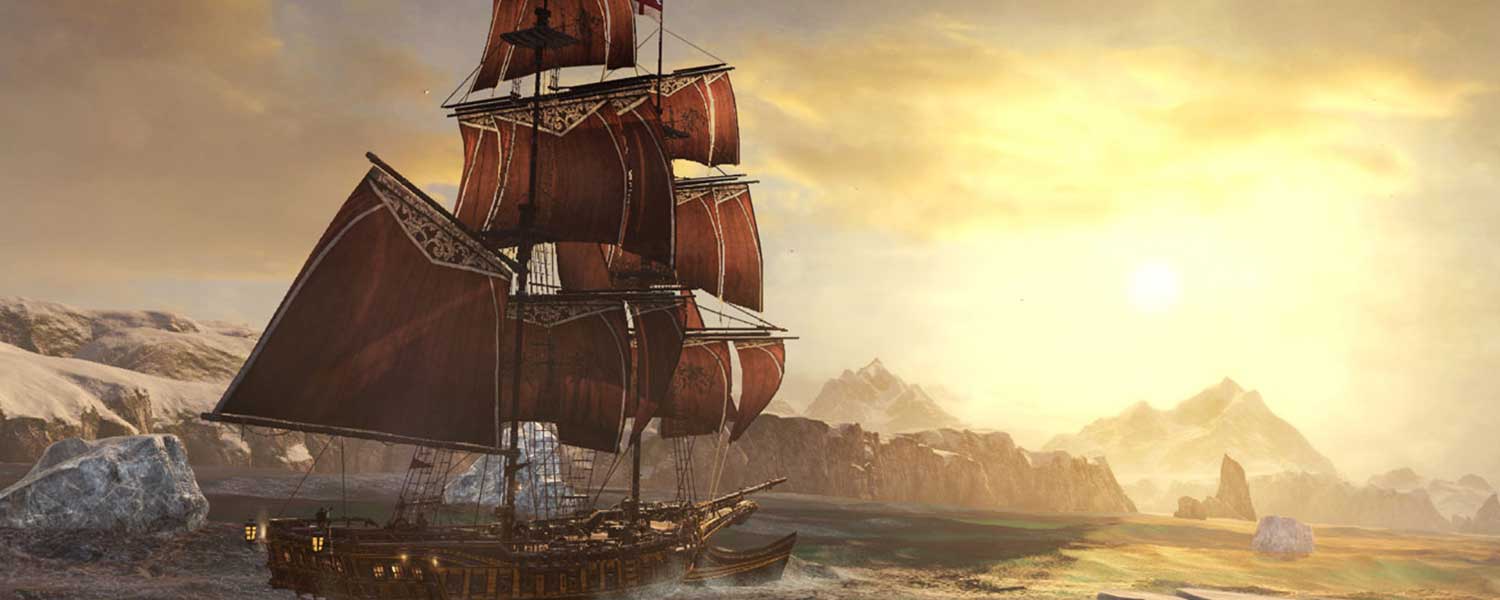 What I really like about Rogue is how it manages to tell a story from the villains’ side, but in a way that almost rationalises their behaviours. Rogue presents almost an entirely alternative perspective that we’ve never really had in Assassin’s Creed before. Shay and his conclave never explicitly admit that what they think they’re doing is wrong and they never behave like the maniacal, moustache twirling villains you’ve seen in previous games of the franchise. It’s strange to say this, but I totally understand where the Templars are coming from now. Kind of.
What I really like about Rogue is how it manages to tell a story from the villains’ side, but in a way that almost rationalises their behaviours. Rogue presents almost an entirely alternative perspective that we’ve never really had in Assassin’s Creed before. Shay and his conclave never explicitly admit that what they think they’re doing is wrong and they never behave like the maniacal, moustache twirling villains you’ve seen in previous games of the franchise. It’s strange to say this, but I totally understand where the Templars are coming from now. Kind of.
I’d be remiss to admit that Rogue is a bit of a retread of locales from Black Flag, though this isn’t a bad thing. You’ll revisit New York from Assassin’s Creed III, but in a less run-down state than it appeared in that game. The Atlantic Sea returns but has largely frozen over and is now littered with icebergs, changing the way you navigate the seas. There are some new locations here and there – like the River Valley and Albany – but everything else is recycled from previous games. It’s not that bad, since these areas have had enough work done to them to feel new, but there is an element of reuse here.
If you ever played Black Flag, you’ve probably got a good idea of what to expect from Rogue. The elements that are different are what sets it apart from it’s predecessor. Shay’s ship, the Morrigan, is much smaller than the Aguila and Jackdaw. As such, there’s new weapons at Shay’s disposal on the high seas. They all are similar in concept to the weapons and equipment of previous games but behave differently enough to provide a fresh spin on the naval combat, especially for those who had their fill of it in Black Flag and III.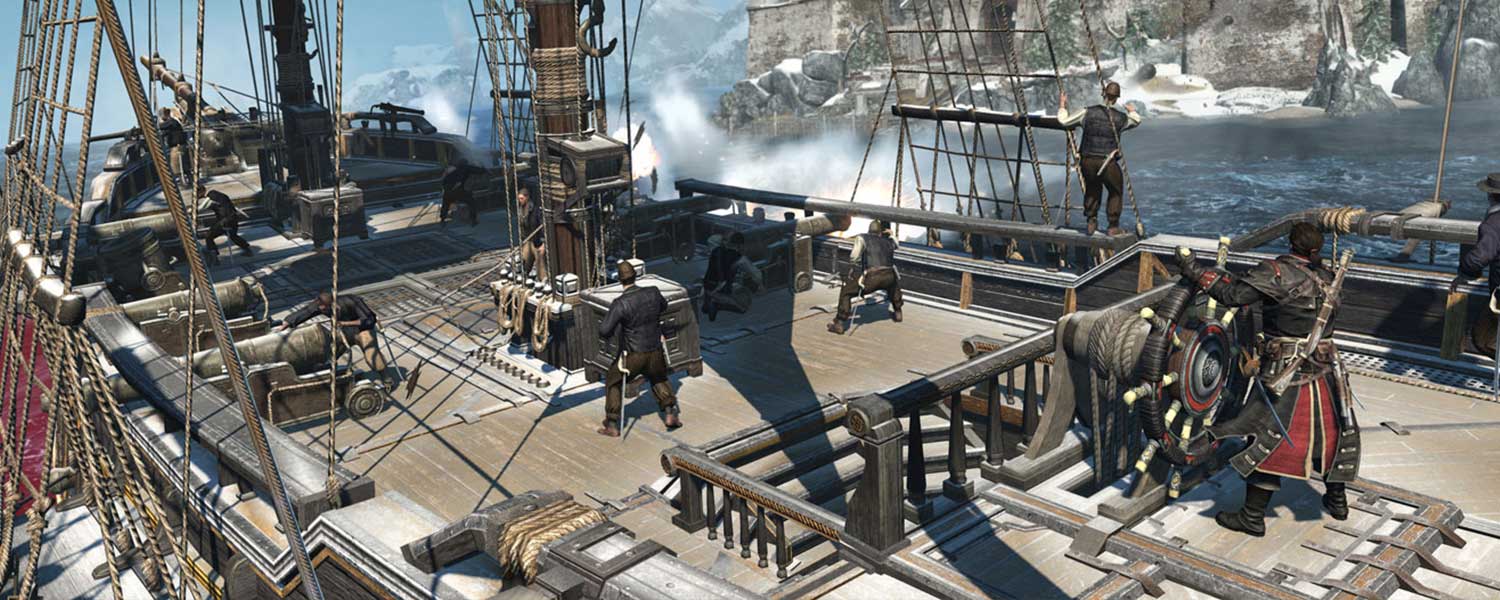 Adding to this is the elements that have only appeared in Rogue – the icebergs and icecaps. As the Atlantic has frozen over, these are strewn throughout the sea. During combat, Shay can destroy an iceberg (which is incredibly satisfying) and the ripples they create can usually be used to sink smaller ships. Ice caps are largely cosmetic but provide an incredibly satisfying edge to exploration – there’s nothing that feels better than cracking one with your ship to open new areas in the Atlantic.
Adding to this is the elements that have only appeared in Rogue – the icebergs and icecaps. As the Atlantic has frozen over, these are strewn throughout the sea. During combat, Shay can destroy an iceberg (which is incredibly satisfying) and the ripples they create can usually be used to sink smaller ships. Ice caps are largely cosmetic but provide an incredibly satisfying edge to exploration – there’s nothing that feels better than cracking one with your ship to open new areas in the Atlantic.
There’s other cool twists thrown in too. As Shay is a Templar who has defected from the order of Assassin’s, he’s essentially a wanted man. As such, the Assassins are always pursuing him whether it be via ship or on foot. This is where Rogue gets interesting, as it manages to incorporate elements from the series multiplayer into the single player – when an assassin is near you’ll hear whispers and they’ll hide on the rooftops or in a hay stack. It’s fun to sneak up on them and beat them at their own game. It’s, once again, a simple addition but it makes the game much tenser and keeps you on your toes. You’ll even be trying to stop assassinations in some of the main missions too.
As with other Assassin’s Creed games there’s a wealth of collectibles to scour the seas, rivers and islands for too. When you’re not collecting items, you’ll be sending off your fleets in a smart little meta-game that describes the Seven Years War – called the naval campaign in the game. If you’re familiar with Kenway’s Fleet from Black Flag, you’ll be familiar with the naval campaign in Rogue. It’s a thing you can initiate in the background, return to after a certain amount of real time has passed, and reap the benefits.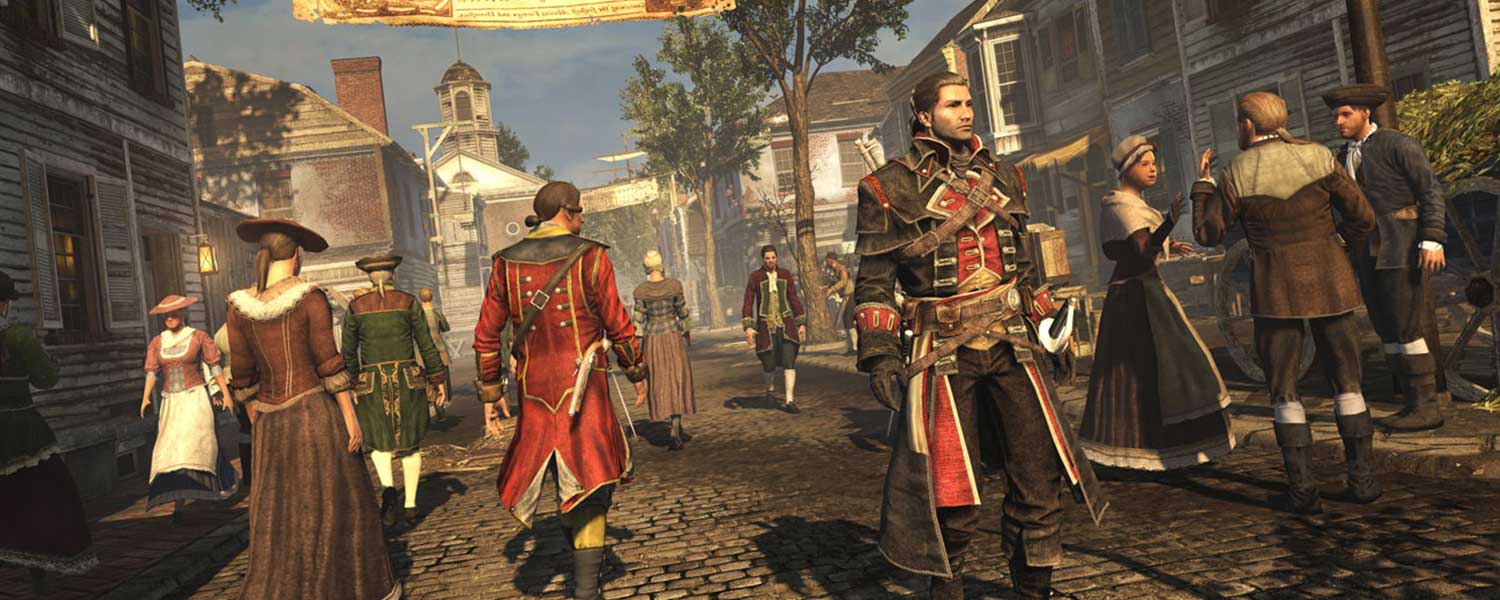 As per tradition, there is a modern-day storyline too, which also follows on directly from Black Flag. Presented in first person, this is where you’ll explore the offices of an Abstergo subsidiary and slowly unravel a conspiracy. I’ve always loved the modern-day storyline, so I enjoyed unravelling the conspiracies and drawing links to other games – but they can be completed quickly so they don’t hurt the pacing too much.
As per tradition, there is a modern-day storyline too, which also follows on directly from Black Flag. Presented in first person, this is where you’ll explore the offices of an Abstergo subsidiary and slowly unravel a conspiracy. I’ve always loved the modern-day storyline, so I enjoyed unravelling the conspiracies and drawing links to other games – but they can be completed quickly so they don’t hurt the pacing too much.
Rogue is also quite possibly one of the shortest Assassin’s Creed games ever made. To fully complete the main story, most players will take roughly ten or so hours. Of course, to collect everything, it’ll take anywhere between twenty and thirty too. But despite being relatively short, Rogue’s brevity and simplicity in the story feels appropriate. Essentially, Rogue ensures that it doesn’t wear out its welcome and it’s a better Assassin’s Creed game for that.
As a remaster, Rogue is a solid effort though some options are missing that I would’ve appreciated. The game defaults to 4K output at a very stable 30 frames per second, though it would’ve been nice to have an option to reduce the resolution and double the framerate. Instead, Rogue Remastered has clearer vistas, more vicious snowstorms and a much more stable framerate. There were little to no slowdowns, the character models look great and I could see much further into the horizon than in the original release. Visually, the game has been touched up to the same standard as Black Flag or even Unity, and looks great.
Voice work, on the other hand, is kind of strange. Shay himself is well voiced and to my surprise was voiced by a Canadian. This is particularly impressive considering how well-done Shay’s accent is especially during some more intense moments. But then, on the other side of the spectrum, is first man Chris Gist, whose voice actor is so horrendously bad that I almost always avoided sailing to locations wherever possible. The score is great too, with classic pieces from Assassin’s Creed histories but with obvious Celtic influences to pay tribute to Shay’s history.
